The Best Kitchen Plants
In fact, despite the “difficult living conditions”, the choice of plants for the kitchen is practically unlimited. For convenience, we suggest considering flowers for the kitchen by category.
The Most Unpretentious Plants
If you definitely want live plants, but are not ready to spend a lot of time caring for them, take a closer look at these 7 unpretentious flowers for the kitchen.
Chlorophytum
It is considered the easiest to grow ampelous plant. The advantages of chlorophytum: they perfectly purify the air, are undemanding to sunlight, and can withstand the lack of watering. They grow quickly and look impressive both in hanging pots and on windowsills.
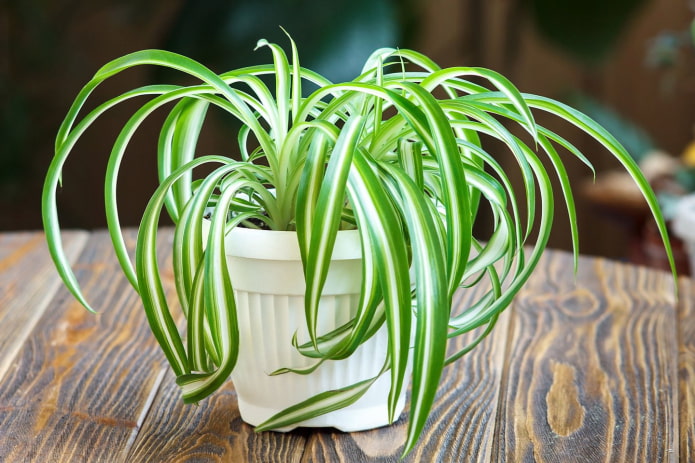
Geranium
Our grandmothers loved pelargoniums, but they still remain at the top of indoor plants for the kitchen. Fluffy leaves perfectly purify the air, and the flowers decorating them add decorativeness to the room.

The photo shows a blooming geranium
Crassula
Crassula is not demanding in terms of water, soil, or location. Money trees are succulents, they accumulate water in their leaves: therefore, they are not afraid of missed watering.
The only nuance is that it should be placed so as to avoid direct sunlight.
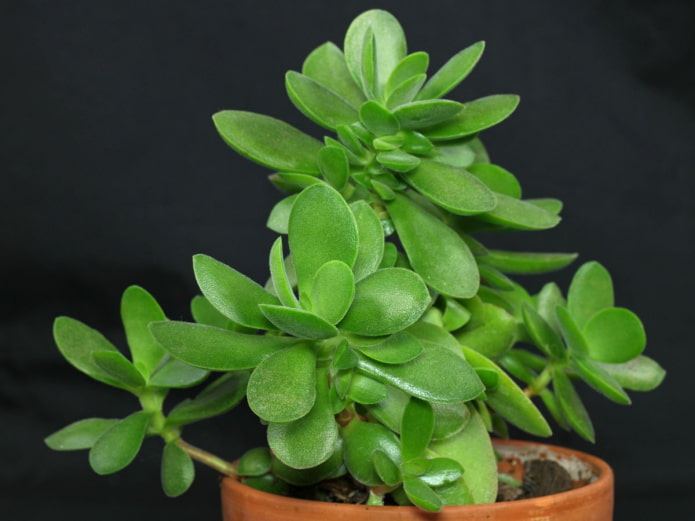
Zamioculcas
In Russia, this indoor plant with dark green arrow-like leaves is nicknamed the dollar tree. A young seedling can be used to decorate an open shelf, while adult plants, whose shoots reach 100 cm in length, are placed on the floor, for example, in a free corner.

Tradescantia
The second simplest and most popular after chlorophytum. Tradescantia is ampelous, meaning its branches with shoots hang down. Therefore, it is best to place the pots with this unpretentious plant higher up – on the refrigerator, kitchen cabinet or shelf.
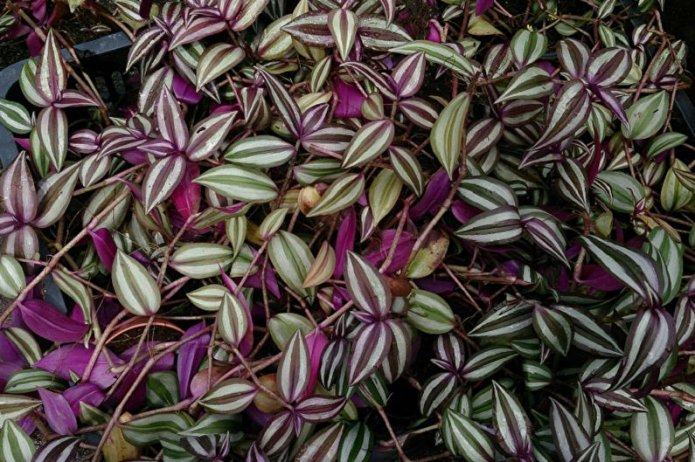
Sansevieria
Like any cacti and succulents, this plant does not require special care. Mother-in-law’s tongue can withstand temperature changes (it is not afraid of airing even in winter), bright light, and high humidity.
Among the species, everyone will find something to suit their taste:
- small varieties with short leaves can be placed on the window,
- tall varieties with long leaves can be placed on the floor,
- decorative tubular varieties, similar to aloe, can be placed on a table or countertop.
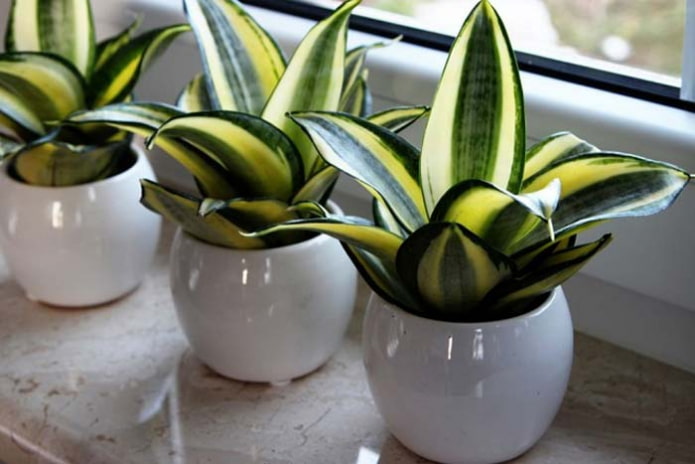
Dracaena
Indoor palms with narrow or wide leaves are incredibly beautiful: among the species, there are dark green, bright green, monochromatic, variegated. Large ones are conveniently placed below, on the floor.
Original Sanders, reminiscent of bamboo, are often used in table compositions. They can be grown in water, so it is enough to put a few branches in a beautiful vase to get an original green bouquet.
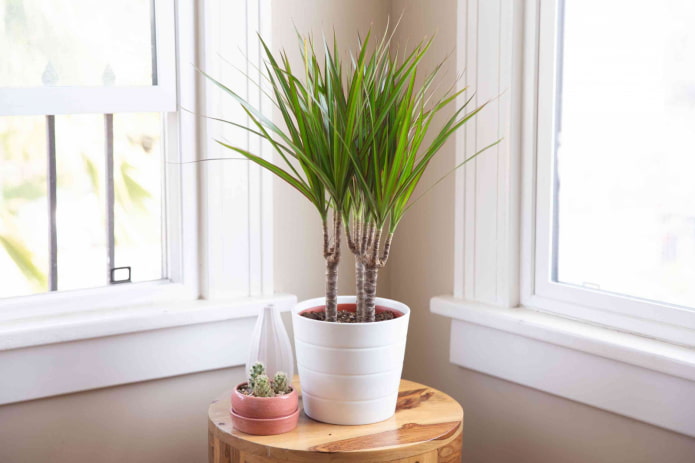
Climbing plants
Climbing varieties are used to add coziness to open shelves or to decorate the empty space above the upper cabinets.
Cissus
Commonly known as birch. A fast-growing creeper, somewhat reminiscent of ordinary garden ivy. The beautiful branches of the lush bush can be left alone, then they will simply fall from above. Or they can be directed using special supports to form a whole green wall or a panel.
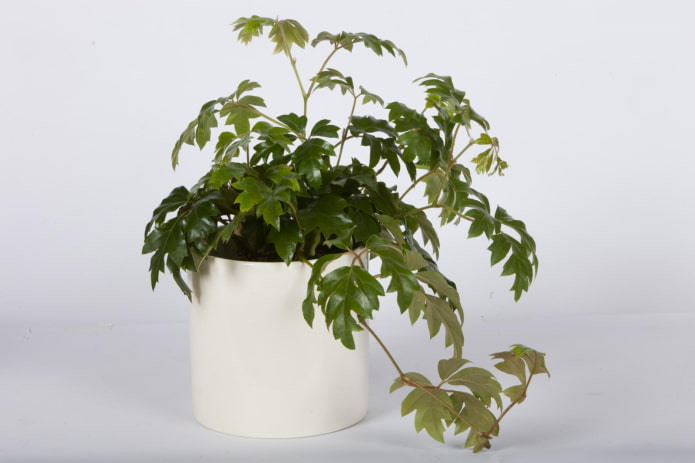
Ficus succulent
Ficus Sagittata differs from its relatives in its appearance: it is not a stately tree, but an unusual bush with long, thin branches. The leaves are quite small (~1.5-2 cm), rounded and variegated: the white border turns an ordinary houseplant into an original decoration of the kitchen area.
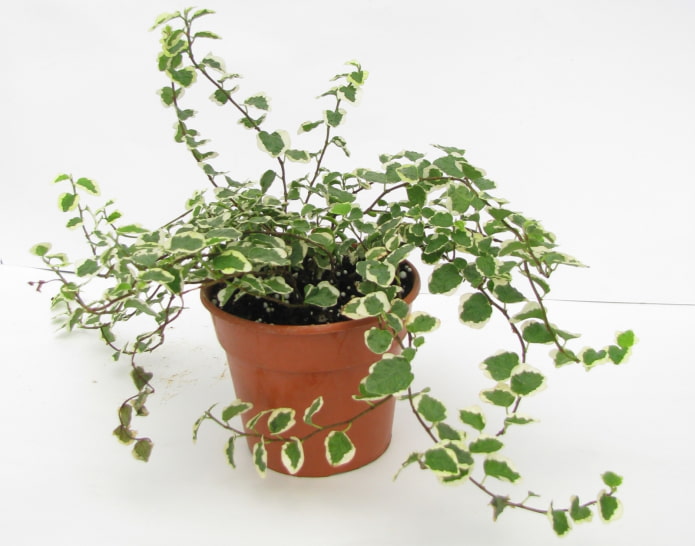
Episcia
Unlike the previous options, episcia also blooms! The flowers, however, are not very decorative: small, red, inexpressive.
The role of the main beauties is taken by the leaves: a velvety mother-of-pearl surface in combination with a pronounced mesh pattern definitely attracts attention.
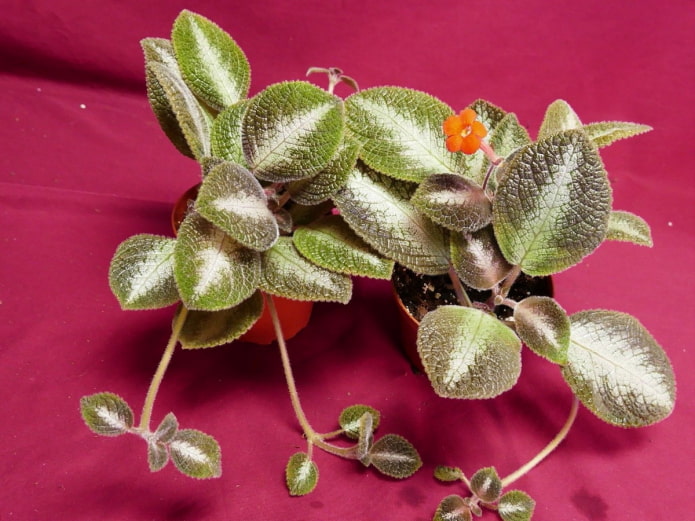
Monstera Adansonii
If for a small kitchen it is better to choose Ficus Sagittata, then for a large one preference should be given to Monstera adansonii. Compared to other monsteras, this one has not very large (20-30 cm) carved leaves and very tenacious branches: the Adanson species can even cling to a wall.
At home, this fact, combined with rapid growth, can become a disadvantage: therefore, if you do not want the plant to damage the wallpaper, trim it in time, direct the shoots.

In the photo, small-leaved Adanson monstera
Scindapsus
The second name is epiprenum. In the wild, one representative grows several kilometers wide and upward: because it grows lightning fast, in its native land it is considered a parasite and a pest.
In indoor conditions, timely pruning will help to restrain rapid growth. But in gratitude you will get an unpretentious and very beautiful plant.
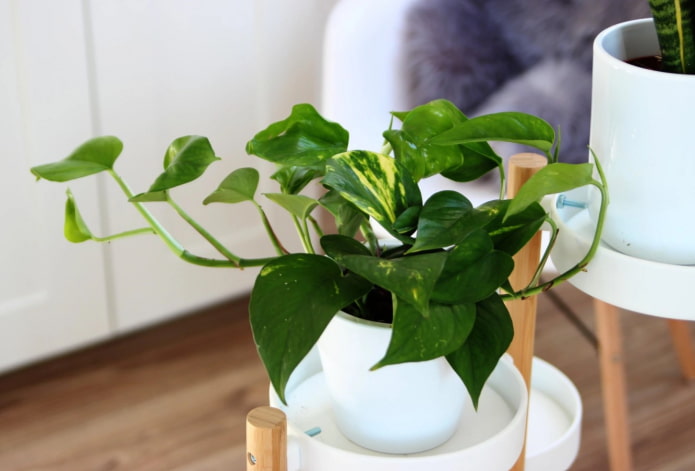
Artificial flowers and plants
Live plants are not suitable for the kitchen, but you want to add green decor? Take a closer look at the imitation options.
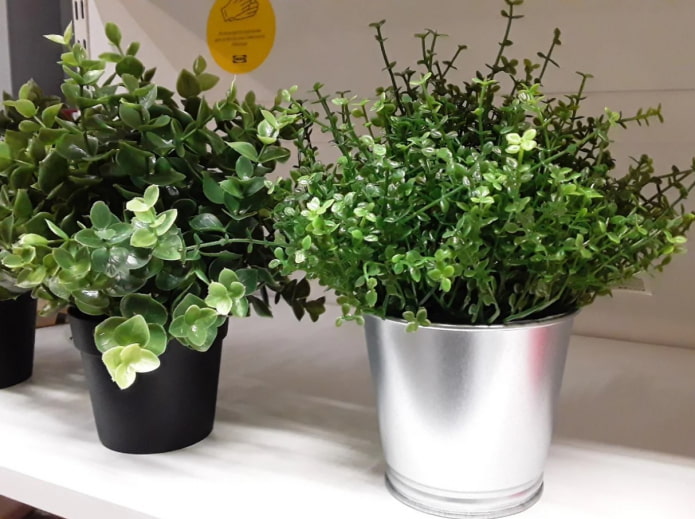
The photo shows artificial flowers from IKEA
Advantages of artificial flowers:
- they do not require care (watering, replanting);
- they retain their original appearance (they do not grow, do not fade);
- they look almost indistinguishable from natural ones;
- they can be used in the shade, in the sun, in heat, cold.
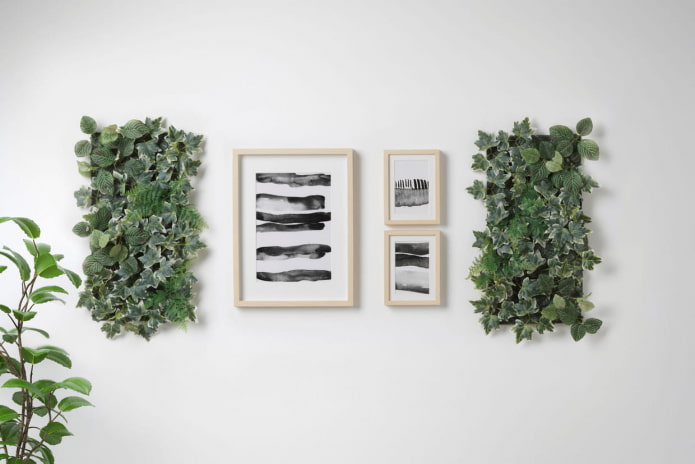
The main thing to remember: to keep plastic plants looking fresh, they should be regularly cleaned with a dry cloth from dust, washed from grease.
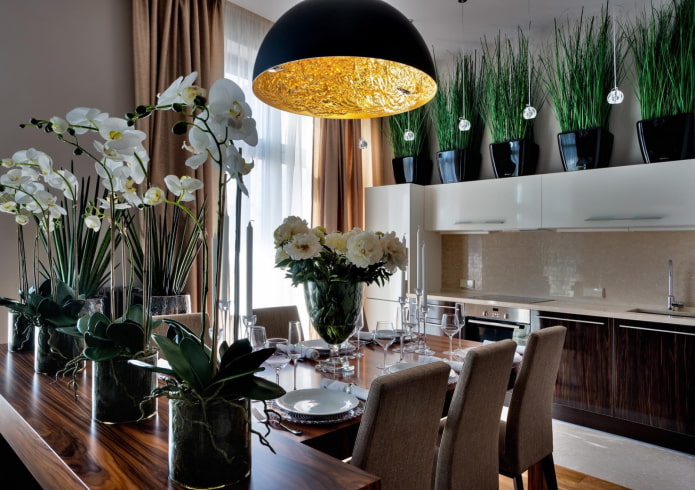
Application options:
- Potted ones are placed on the floor, table, windowsill, shelves.
- Flowers with artificial grass are hung on the railing.
- Compositions in the form of bouquets decorate tables, open shelving, shelves.
Potted plants
In the kitchen interior, potted plants can be both large, floor-standing, and small – which will have enough space on the window, table, small shelf.
Spathiphyllum
The main thing you need to know about “women’s happiness” is that it does not tolerate drafts! But it loves high humidity. Therefore, instead of a windowsill, place it in a bright place next to the sink – the flower will respond with lush greenery and a beautiful white bud, reminiscent of a calla.
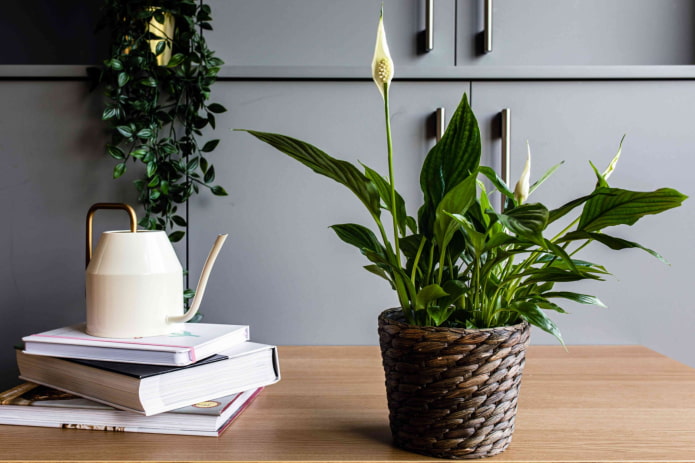
The photo shows a blooming spathiphyllum
Aglaonema
Favorable conditions for an ornamental plant of the Araceae family: partial shade, no drafts, regular watering, spraying. If the aglaonema is comfortable, it produces new variegated leaves and quickly turns into a lush bush.
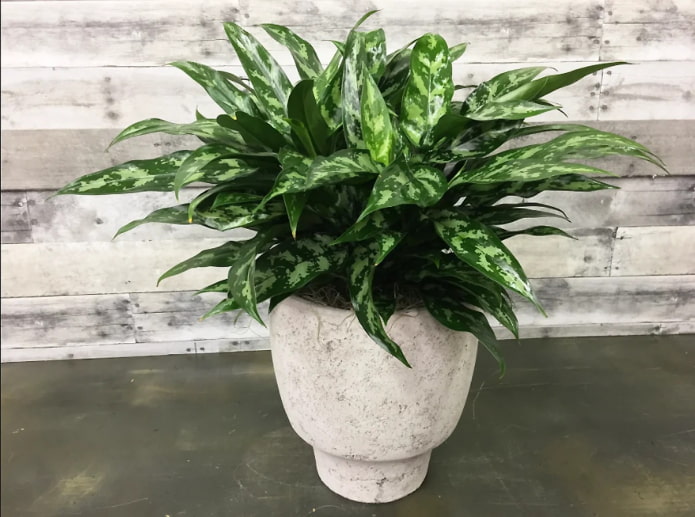
Kalanchoe
The flowering relative of the money tree is also undemanding to water, sun, lighting, and container size. Flowering occurs in winter, lasts about a month: a large number of bright buds will decorate any kitchen window.
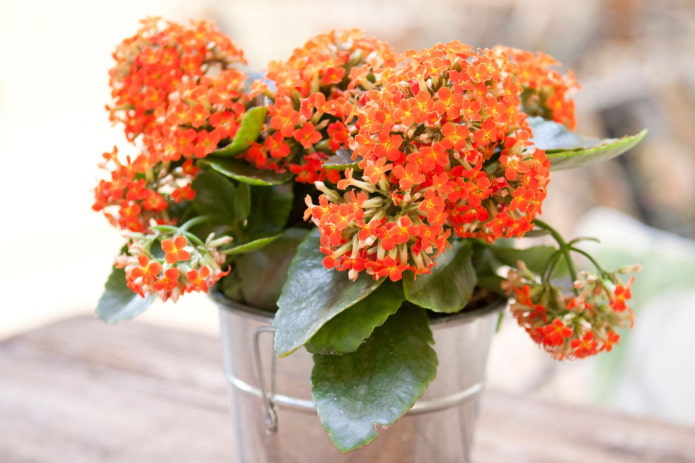
Citrus
Home lemons, tangerines cannot be called unpretentious: they are more suitable for experienced gardeners. If grown in a bright place, taking into account the high requirements for the soil and watering regularly, citrus fruits will delight you with regular flowering and offspring – at least once a year.
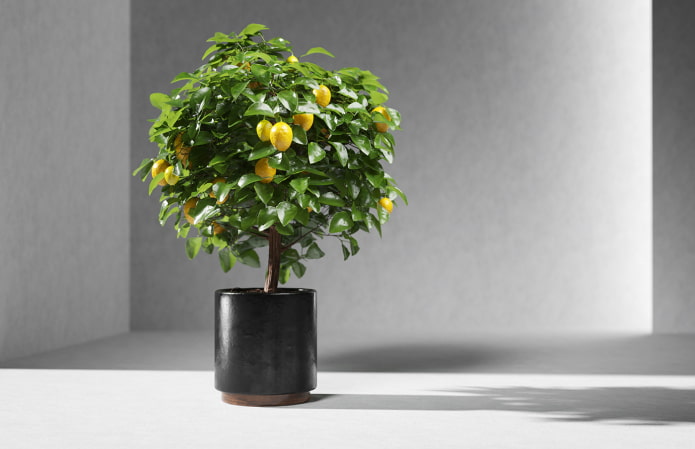
The photo shows an indoor lemon
Ficus
If you rework the famous poem about professions, you can say: there are many ficuses in the world, but you should choose only the one that is dearest to you in the world. There are indeed many species, they differ from each other like heaven and earth. In addition to the creeping ones we have already described, there are:
- small-leaved Benjamin, Kinki, Natasha;
- large-leaved Lyrata, Elastika;
- decorative Microcarpa;
- original Ali (Benedicta).
And many other shapes, sizes, colors! Choose those that suit you.
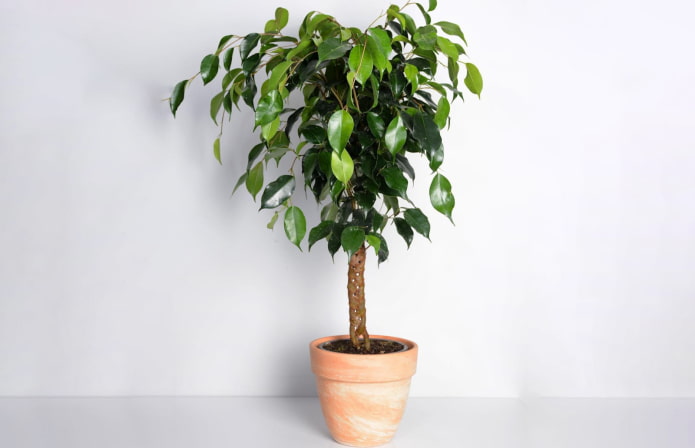
Begonia
Little is said about flowering species in the context of the kitchen, but it is impossible to ignore the charming begonia. In order to admire the fragrant flowers more often, the plant should feel comfortable. To do this, place it in a space filled with sunlight, provide regular watering and spraying, guarantee warmth (above 15-17C) all year round.
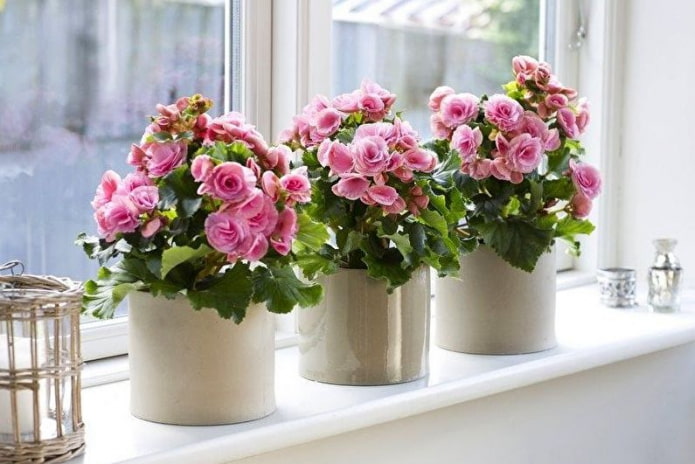
Decorative pepper
This perennial flower is easy to grow from seeds: already in the first year it will bloom profusely and delight with bright tiny fruits.
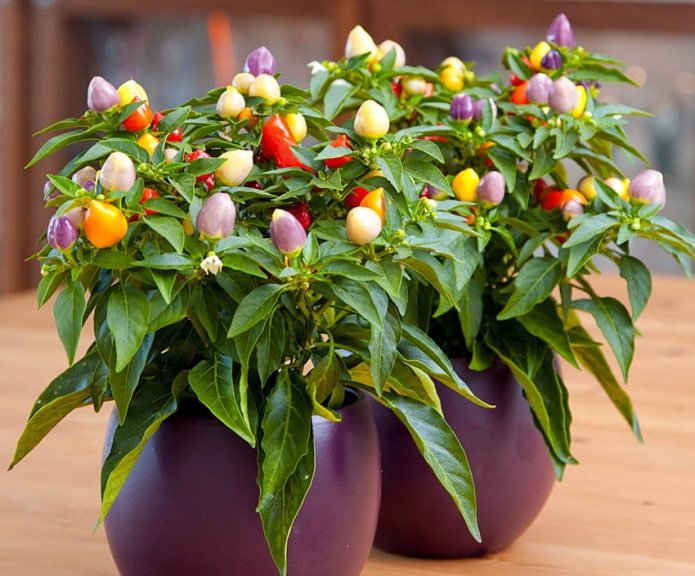
Edible and beautiful plants
In addition to decorative greens, quite useful herbs are also grown on kitchen tables. Some of them, for example dill, parsley, basil, mint, oregano, can be easily grown from a seed by anyone who wants to.
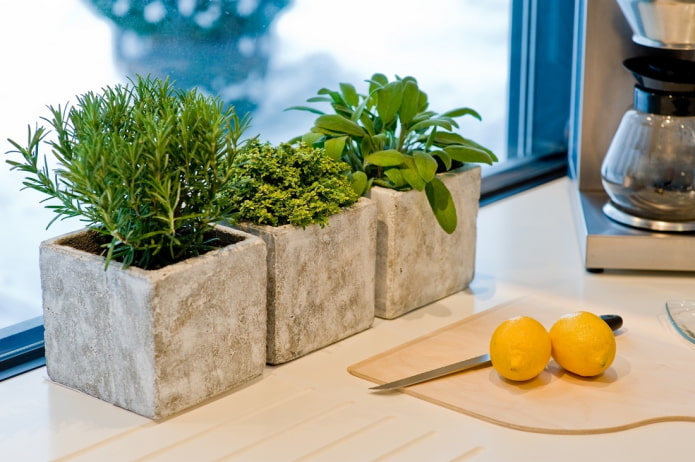
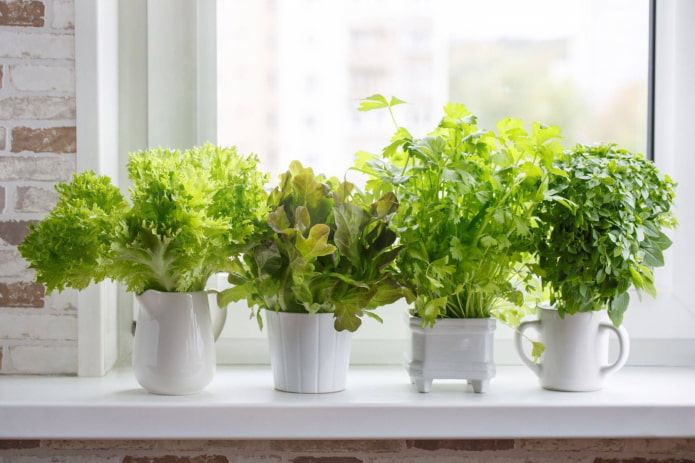
More “harmful” representatives (rosemary, bay leaf, thyme) are easier to buy already grown.
Options for placement in the kitchen
Where to put it:
- Window sill. Consider the cardinal direction — some species cannot be placed in direct sunlight.
- Countertop. Various options for small flowers for the kitchen that will not take up much space are suitable here.
- Open shelves. Green leaves mixed with dishes and storage jars create dynamics in the interior.
- Furniture tops. Ampelous, climbing models look especially advantageous on cabinets and refrigerators.
- Dining table. It is better to choose low flowering representatives: Kalanchoe or begonia will replace a beautiful bouquet and will not wither in a week.
- Floor. Large specimens will help to occupy empty corners.
- Pendants. Flowers can hang above the table, above the window, above the sink – the main thing is to choose a reliable mount.
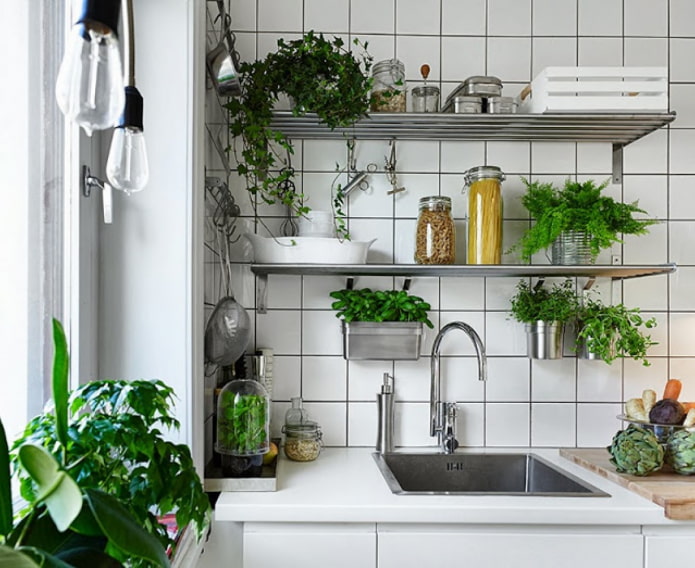
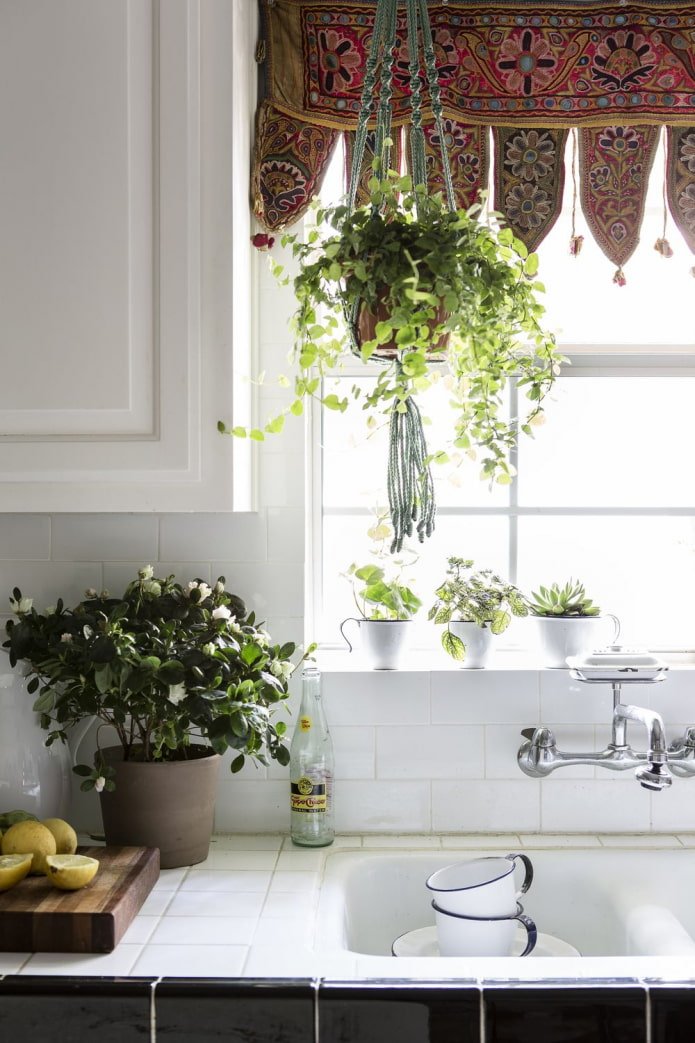
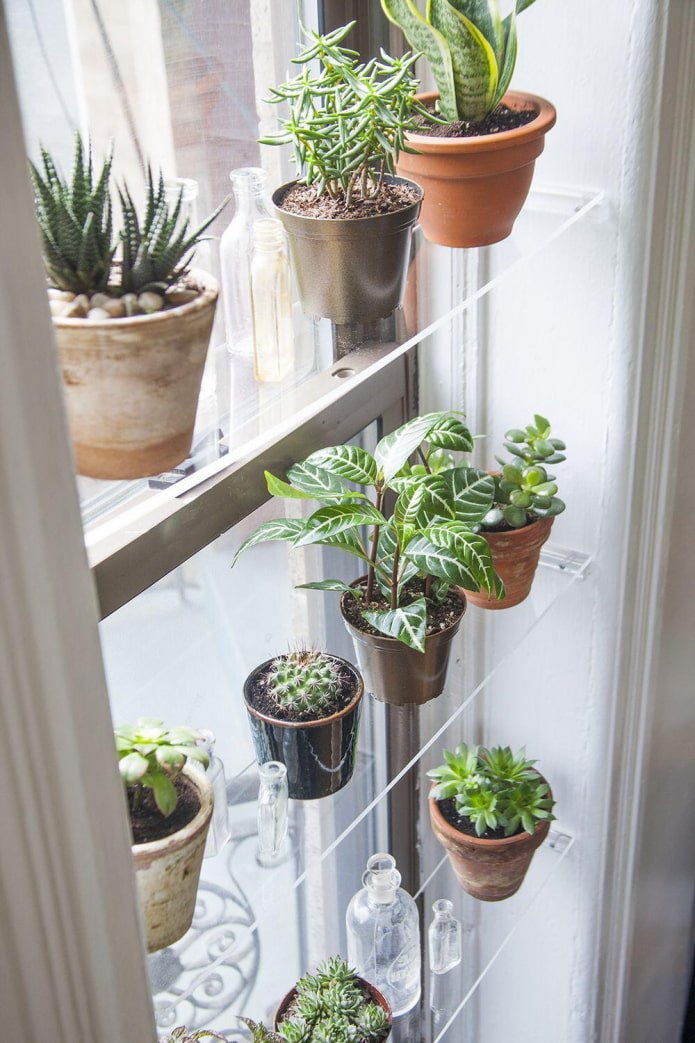
Important! Do not hang fresh flowers over the kettle or place them next to the stove. Steam from boiling water and splashes of hot oil will have a detrimental effect on the health of green residents.
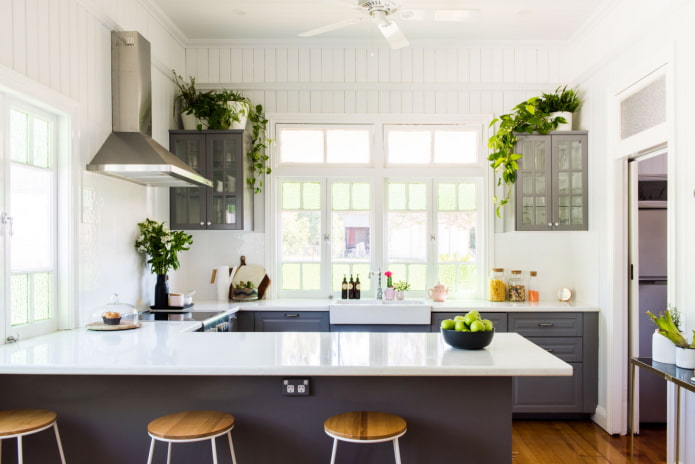
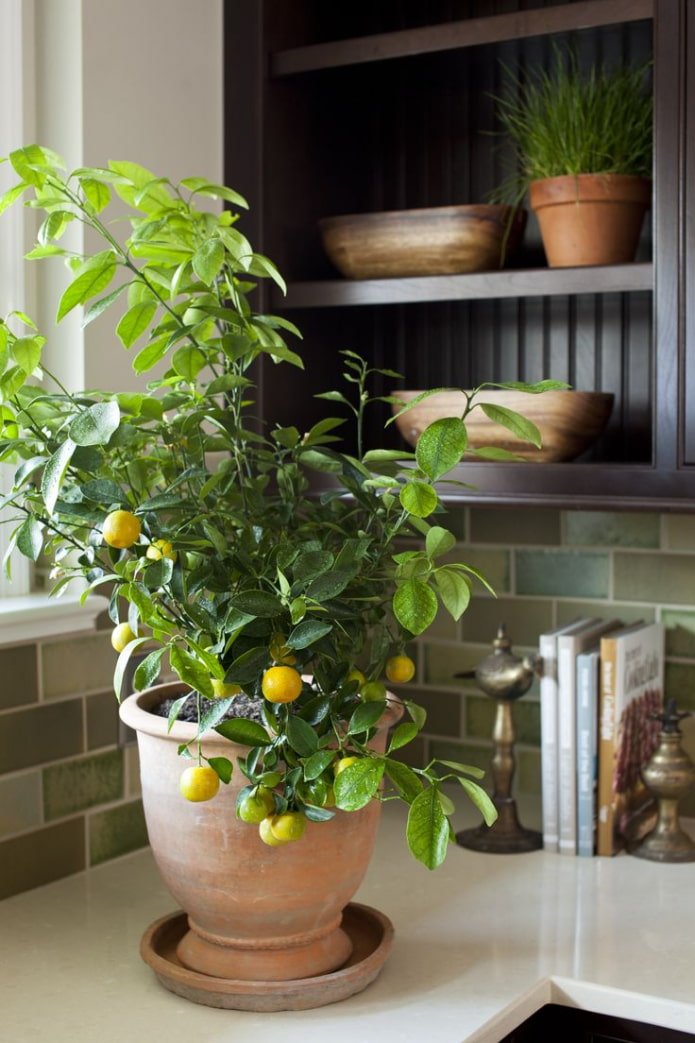
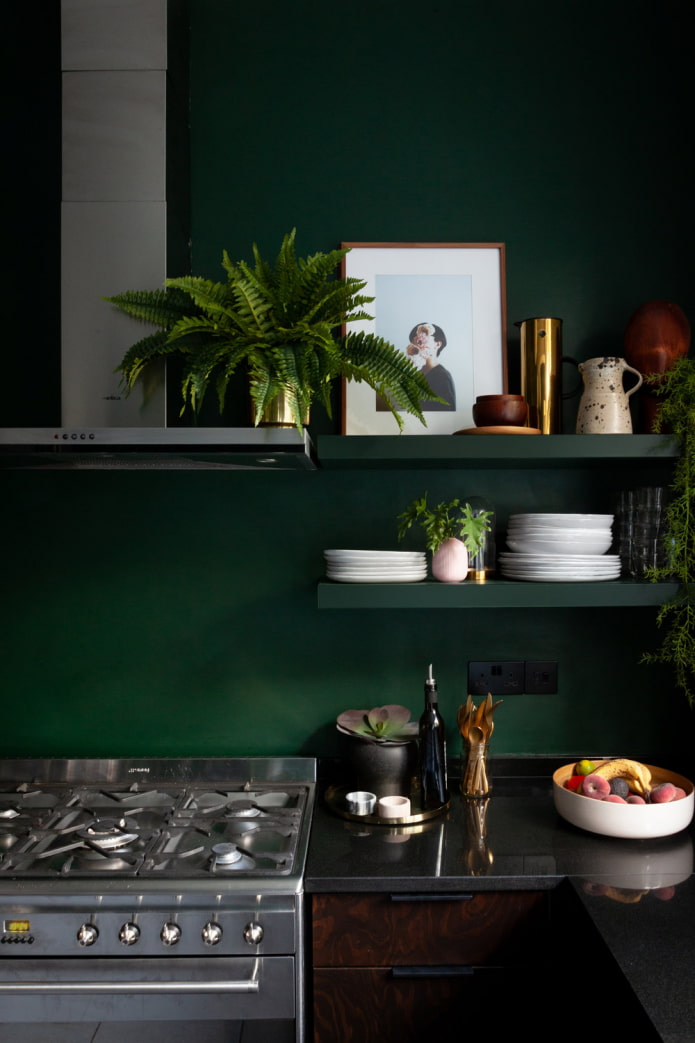
When growing real plants indoors, you need to provide them with the appropriate level of illumination: some can burn in the bright sun, others can die in the shade. When purchasing a new plant, carefully study its preferences.
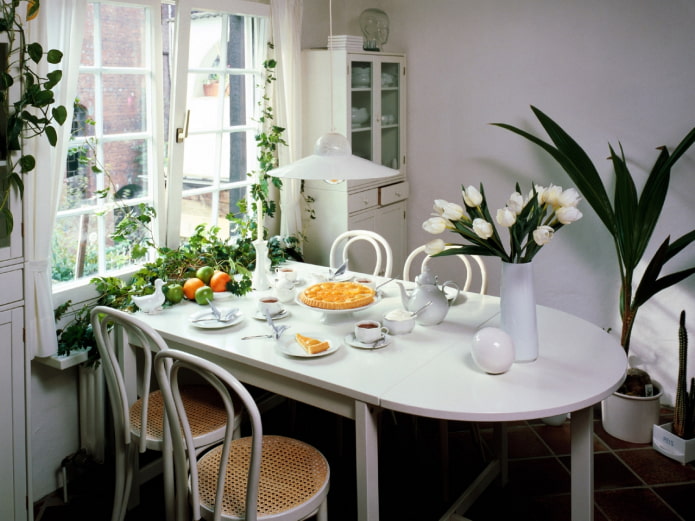
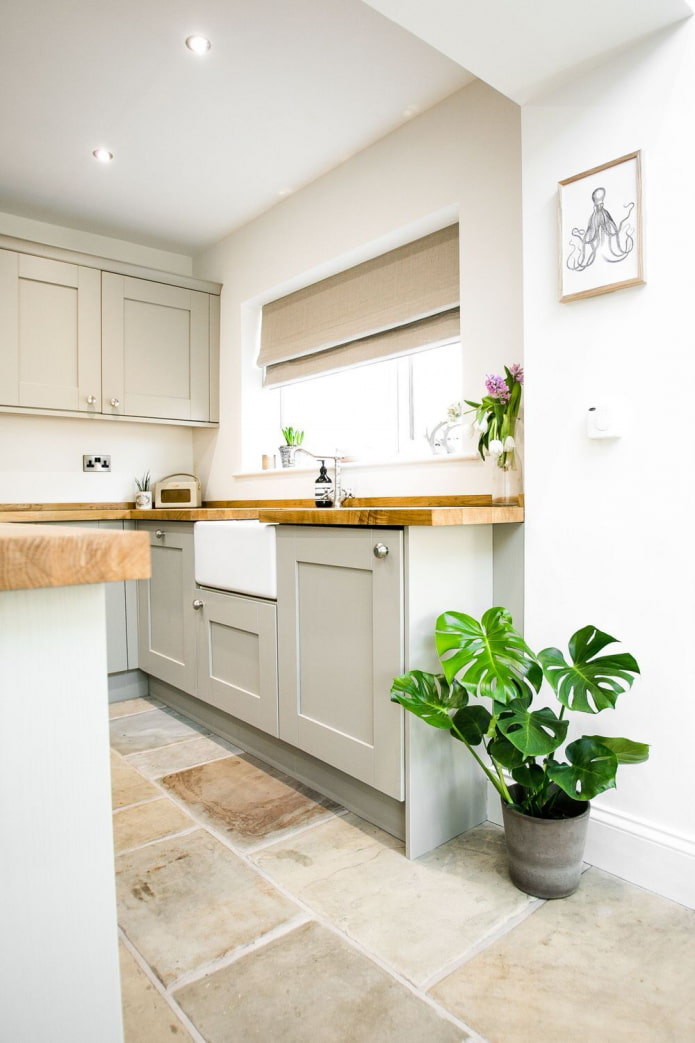
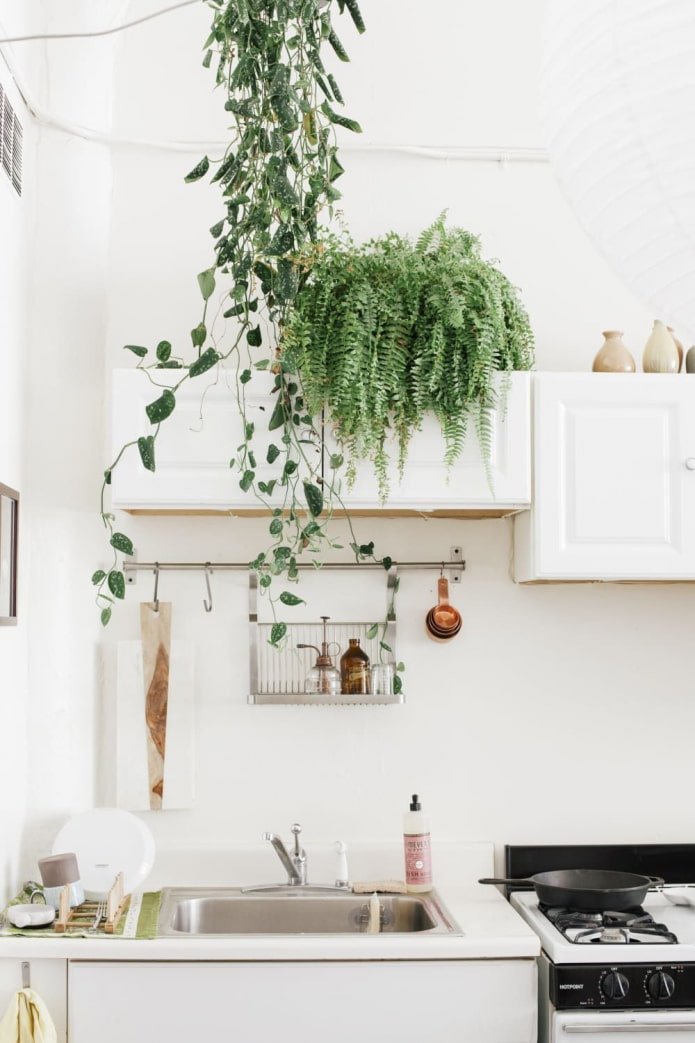
According to the Chinese science of Feng Shui, in the north place sharp-leaved flowers (dracaena, chlorophytum). In the eastern zone, plants with round leaves (crassula, geranium, scindapsus) will look more harmonious.
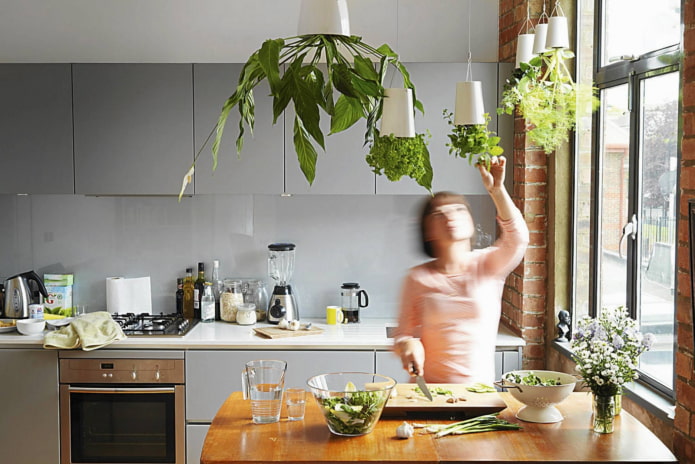
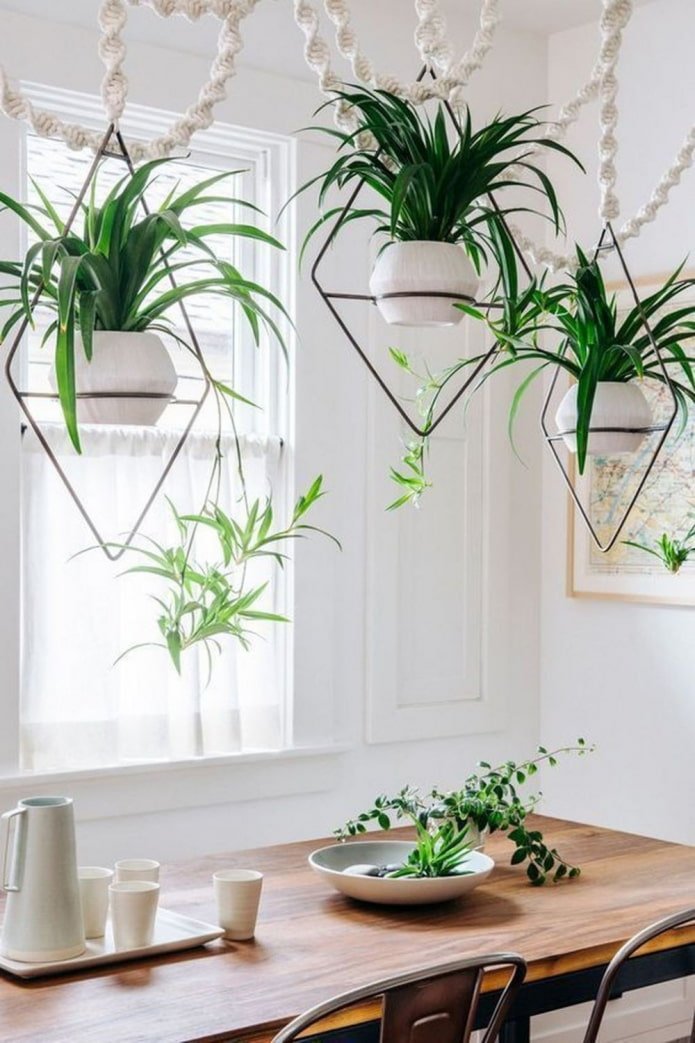
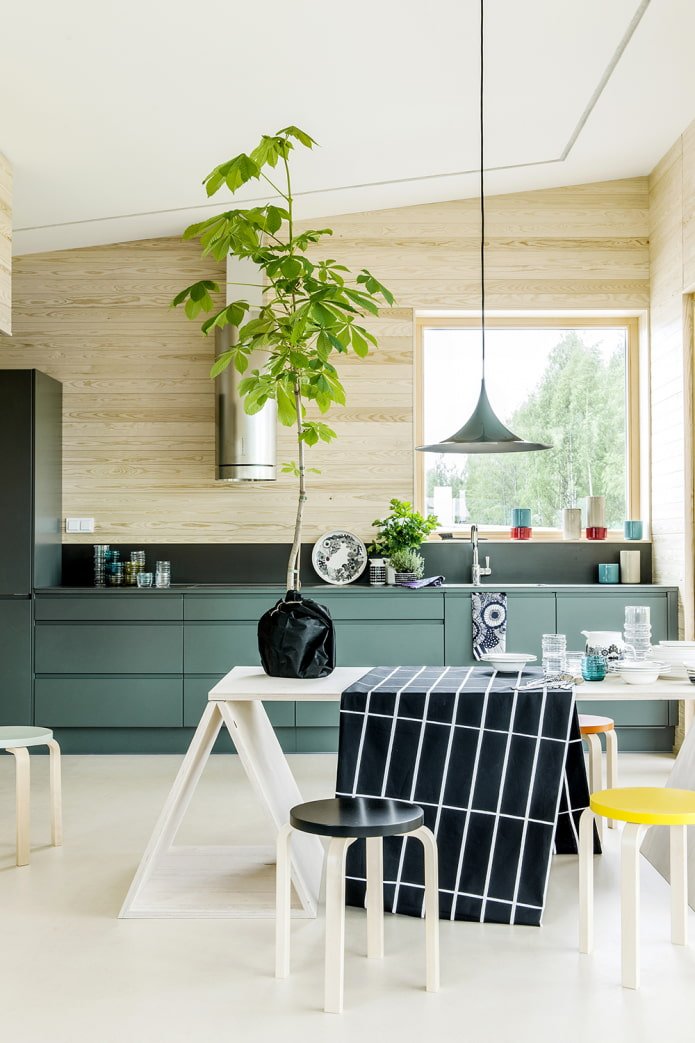
Care recommendations
In addition to watering with settled water, flowers need to be cleaned of dust and dirt. To do this, they can be washed in the shower or wiped with a damp soft cloth. Moreover, the closer the flowers are to the cooking area, the more often it is recommended to clean them: up to once every 2-3 days. The fat that accumulates on the surface blocks the pores and the flower literally suffocates.
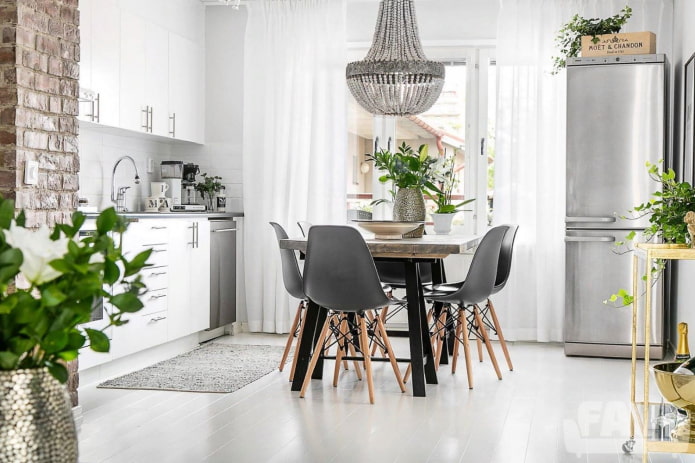
Beautiful examples in the interior
The popular trend of “urban jungle” today has led to an increased interest in flowers. Now lovers of evergreens want to grow them not 1-2 specimens on the windowsill, but a lot and, preferably, everywhere possible!
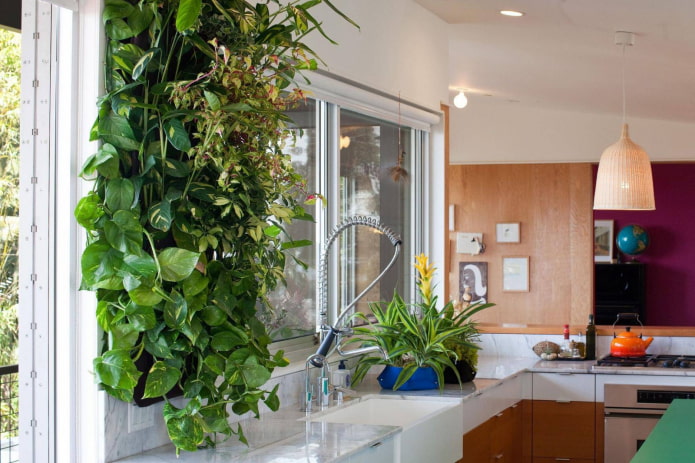
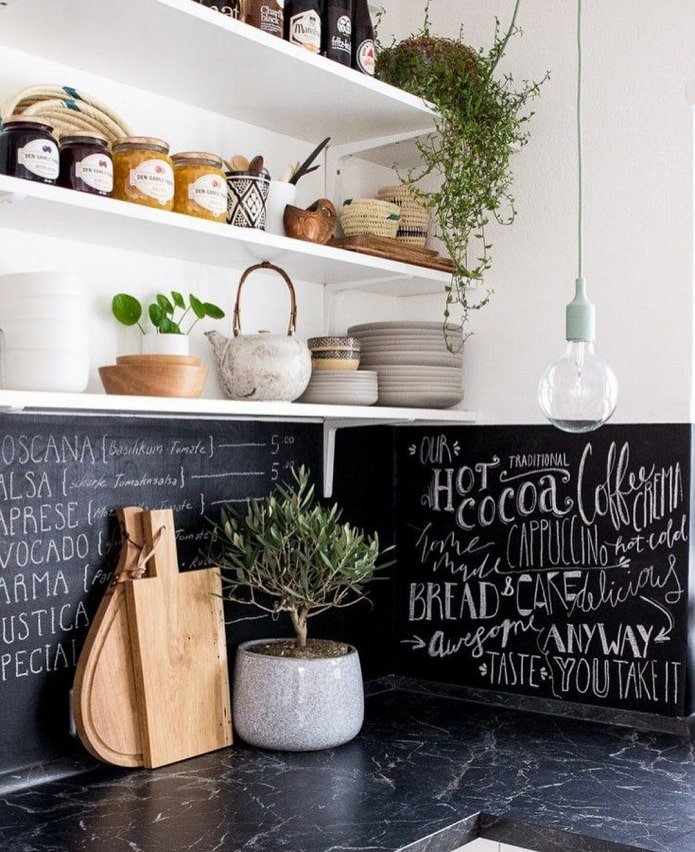
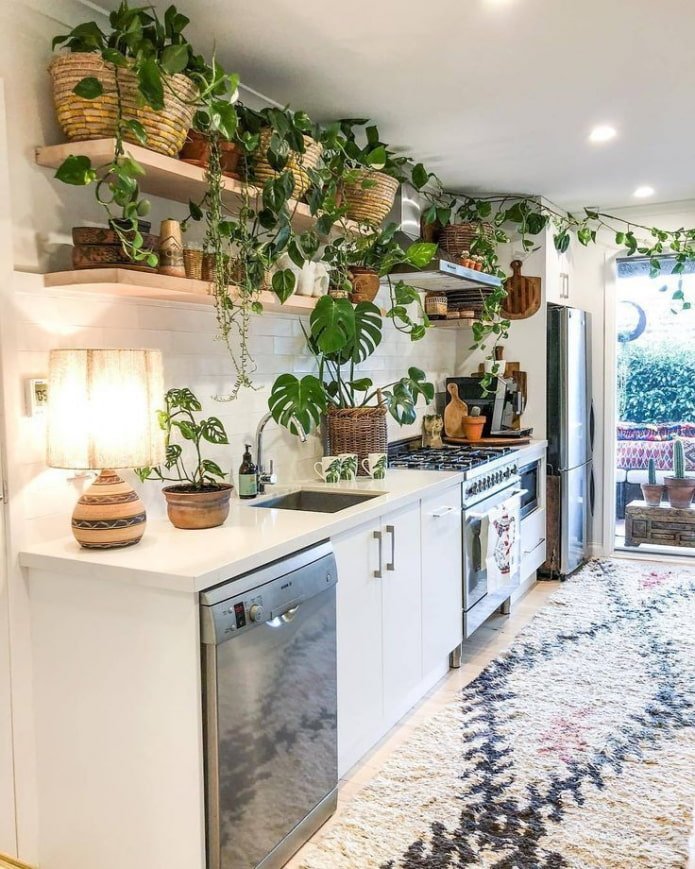
The result is original “green” kitchens that look fresh and original. Take a closer look at the examples in the photo: perhaps this option will suit you too?
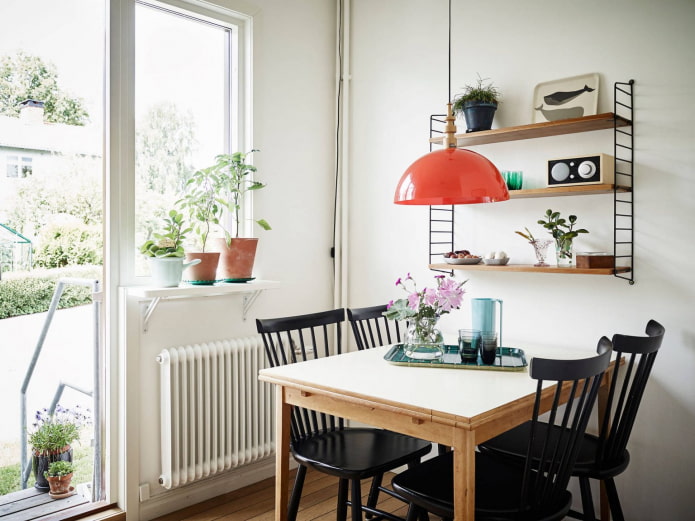
You can grow green companions in any room: they just require more serious care in the kitchen. Provide it to your flowers and they will reciprocate.
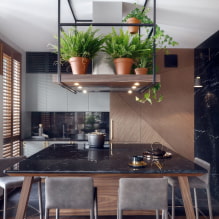
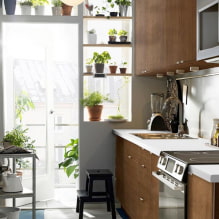
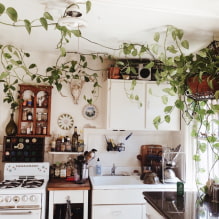
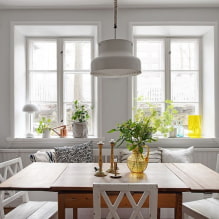
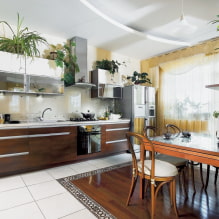
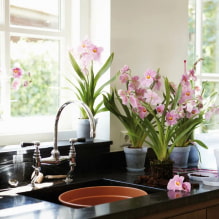
Now reading:
- Purple Wallpaper: 70 Stylish Ideas and Modern Photos
- Provence Style Bathroom Design Ideas: 62 Inspiring Photo Solutions
- Essential Guide to Buying a Pre-Owned Porsche Boxster
- Plastering walls with your own hands: step-by-step guide and 9 common mistakes.
- Interior design in pink shades: 75 inspiring ideas and photos.